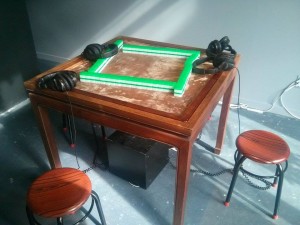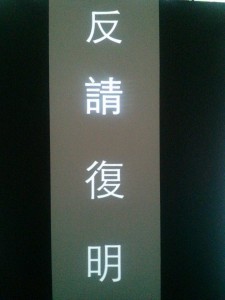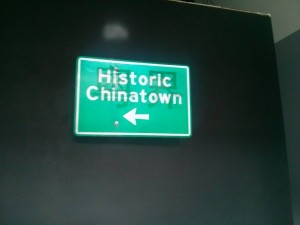Review: Transgression/Cantosphere
Transgression/Cantosphere, created by Hong Kong Exile in collaboration with Zoe Lam and Howie Tsui, aims to try and bring awareness to the decay of the Cantonese language in Chinatown affected by Mandarinisation overseas. With the PRC and its government trying to induce a system to standardize languages across the country (including Hong Kong) with Mandarin, there has been an outcry over the potential loss of identity of the Cantonese language. Recently, Chinatown has been asked to become more “multicultural”;as a result, it, too, has been faced with the danger of losing this identity due to homogenization. By using the meaning of characters and proverbs (Zoe Lam is a linguist from UBC), the exhibit seeks to portray the idea of how the meaning of these phrases can be completely displaced due to the switch of one character, even when it is switched with a character of the same tone. (Hence, the clever title). Is Transgression/Cantosphere successful in depicting this idea? Let’s find out:
Upon entering the exhibit we immediately hear the sounds of mahjong tiles being shuffled and played along with a woman’s voice reading out proverbs and homonym’s filling the whole room, giving it a rather eerie setting. We are then faced with a wall containing a sign reading “Historic Chinatown” and what’s projected on to the sign are two characters that means “Transgression” with the first character suddenly changing into another word meaning “Cantosphere”. Below the sign sits an empty table with a full set of mahjong tiles with four headphones. What’s playing within the headphones is a male’s voice being taught different Cantonese proverbs and the uses of these different same-sounding words that could mean completely different things. Once we enter the main room of the exhibit we notice that’s it’s actually quite open. The Cantonese words that the woman was reading are being displayed on the wall by projection, and along the other three walls exists a full line of text (with no spaces) that apparently came from a public document describing how they needed to “modernize” Chinatown by making it more multicultural. Finally across from the projection, laid a set of four different nature-influenced products that look like they’ve been been manufactured a long time ago, giving off a sense of history.
Before I give my opinion about this exhibit, I would like to first state that I am rather familiar with the Cantonese language as I, myself, am Cantonese who live in a family who consistently converse in the language. As I entered the exhibit, I am immediately able to familiarize myself with the proverbs and the constant noises of mahjong tile (which I thought really helped immerse us into that Cantosphere culture). To me, I thoroughly enjoyed the exhibit and I believe that it was very clever in the uses of language (especially the title) and the idea of switched homonyms to combat the issue of homogenization. At first, I was a little bit thrown off by the eeriness and the lighting of the exhibit when I first walked through, but I believe that it certainly adds to the affect of that fear of the decaying world of Cantosphere. What I was concerned about was for the people who didn’t understand the Cantonese language at all, but at the same time I believe that the headphones at the mahjong table did help rectify that. After exploring this exhibit, I do agree that this issue about preserving the language identity of Chinatown is quite important and should be brought to the attention of more people.


